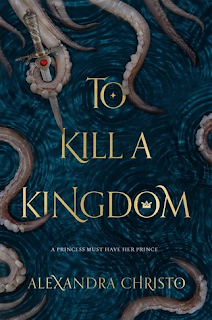Autism Essay
“Autism is not a tragedy. Ignorance is the tragedy.”
Autism has been around for decades. In fact, almost 50 years have passed since the Autism Society held the first National Awareness Month. The first annual National Autistic Children’s week was launched in 1972. It eventually evolved into Autism Acceptance Month. Autism was originally thought to be ableist and a condition that had to be cured. But now, the dialogue about autism is shifting from a negative chance to a positive one. Although a lot has been achieved, there’s still a long way to go.
I believe that Autism Acceptance means just that - accepting autism, making autistic people feel welcome in the world. It means looking beyond the stereotypes of autism. And recognizing that autistics are also members of our communities while acknowledging that they express themselves differently. Autism is just a way of looking at life differently. And just because someone is autistic doesn’t mean they aren’t capable of amazing things. Hundreds of famous people have or had autism (or Asperger syndrome, a kind of autism) too, like Thomas Edison, Albert Einstein, Mark Twain, Bill Gates, etc.
There are several ways we can improve Autism Acceptance at Rancho. One of them is to hold a presentation, each year on a specific day, by someone with autism. This way, the autistic can explain about autism acceptance and awareness, what autism is, what they want others to know about them, their experiences, and more. It can also help students see the positive side of autism. Another way of improving Autism Acceptance at Rancho is to share Autism Awareness/Acceptance videos to improve understanding of autism. For example, videos that show what the world looks like through an autistic’s eyes. Or videos by parents of autistics who explain what they’ve experienced. Showcasing the creative side of autism is another way to improve acceptance and awareness. An art fair with art and crafts made by autistics can be held. And programs can be created to pair Autistics and non-Autistics to help with tutoring. Rancho can raise funds and donate the money to local Autism initiatives. Parenting autistic kids could be hard, and many such parents could be tired, dejected or feeling hopeless. Rancho can help organize programs for the parents of autistic kids such as talks and meetings to inspire, educate, encourage them in their vocation of taking care of such children.
Our school community supports Autism Acceptance in several ways. Milpitas Unified School District (MUSD) serves and provides a variety of services for children and students with disabilities including autism. MUSD also has a program called TPP (Transition Partnership Program) in which special education students work in the community. And Milpitas High School (MHS) holds a ‘Special Needs Program’ that helps them develop life skills and social skills. Also students team up with MUSD’s Special Education and Technology Services department to use virtual reality to introduce what it might be like for a person with autism. But the programs MUSD and MHS hold for Autistic students are not well known. In the future, we can have dedicated websites that propagate about Autism programs, events, exciting news, and special programs where, not only high school students but also middle school students can participate. That would give them not only opportunities, but also exposure, a lifetime of experiences and create activists and evangelists to spread this awareness and promote acceptance.
Autism is often frowned upon. But what if we changed the fundamental way that we viewed people with autism and instead of viewing autism as the problem, we viewed it as a natural part of diversity? A traditional viewpoint is that students with autism are sick, that they have a disease and need to be cured. Cure Autism Now, for example, was one of the first organizations dedicated to encouraging research that would eliminate autism, or lessen it. But is this an accurate viewpoint? What if, instead, viewpoints changed to understand that autism isn’t a disease, that it’s not something that needs to be cured, that it’s something that needs to be accepted? What if characteristics associated with autism, such as hypersensitivity or challenging behavior, are no longer considered negative? What if hypersensitivity was seen as possible indicators of artistic talent? Or if challenging behavior was seen as a warning sign that a student wasn’t feeling well and couldn’t communicate their feelings properly? The world would be a better place.
I believe that we need to convert apathy into compassion, and help promote acceptance and increase awareness, not only in our school community, but around the world via special events and social media. Non-autistic people need to know and understand that our normal life experiences can’t be used to judge the behavior, appearance, or needs of an Autistic. I hope to see Autism programs flourish and Autistic kids grow in society. For people to not only be “aware of Autism” but “accept Autism” because awareness is not sufficient; it is superficial. We need to empathize with them. I hope that non-Autistic people will listen and learn from people with autism, and will dispel myths about autism in our communities. And that the world will see Autistic people for who they are, not only the autism they see on the outside, and also celebrate this diversity. That is my hope.
“I don’t think the worst thing that could happen to a parent is raising a child with autism. I think the worst thing is to raise a child who is cruel to those with autism.”


Comments
Post a Comment